A Brief History of Female Underwear (Thank the Universe for Push-Ups)
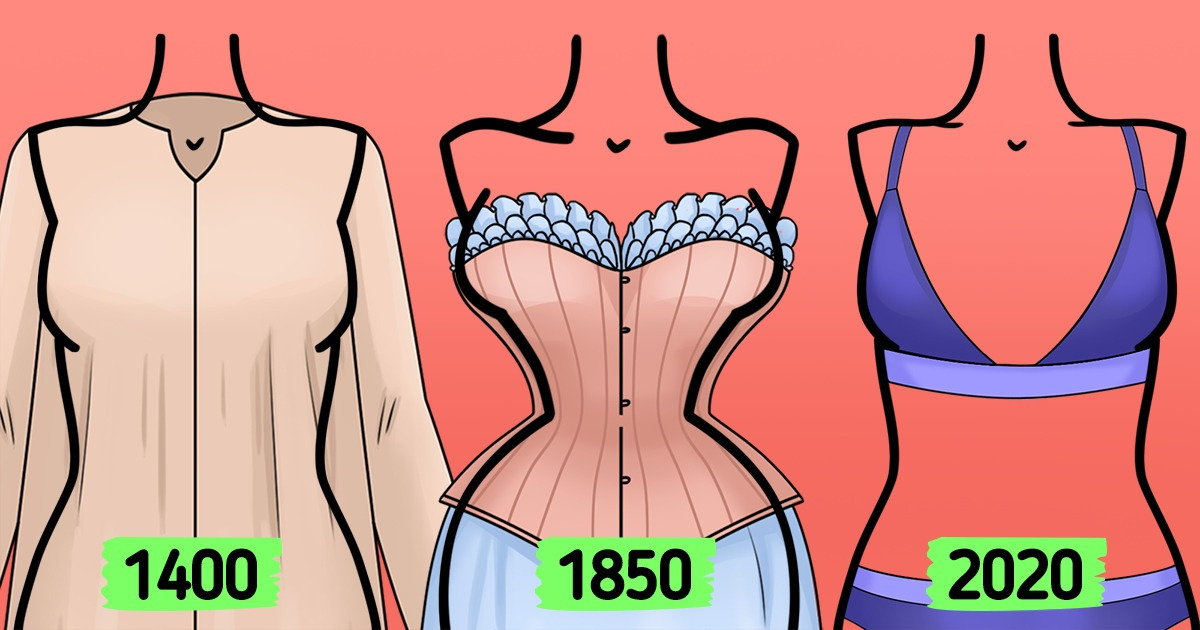
Every item of clothing performs a specific function. Underwear gives us comfort and helps us to maintain hygiene, it absorbs liquids, protects delicate skin from friction, and has a supportive effect. Since ancient times, people have used prototypes of underwear that have evolved along with the changes in our way of life. In this article, you will find information about how underwear has changed over the centuries.
The ancient times: the first bras
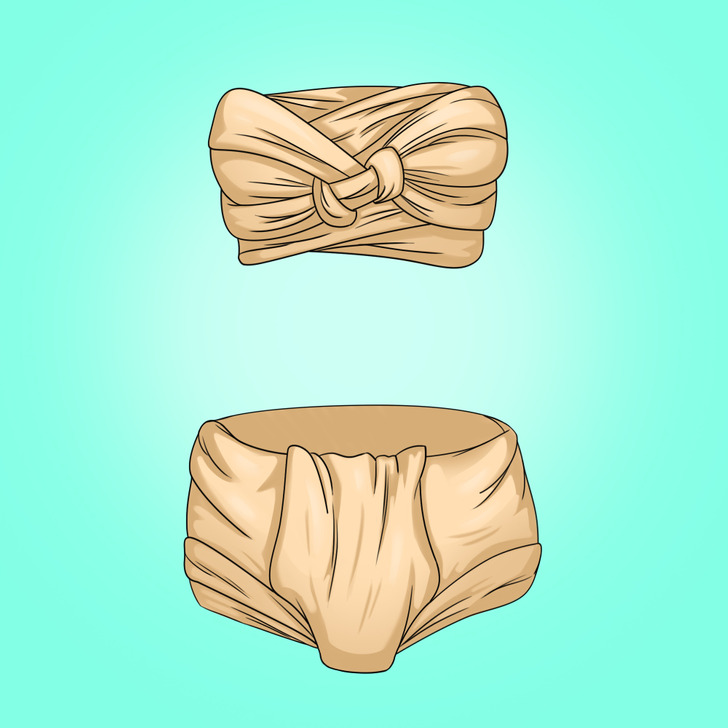
The very first type of underwear in existence was the loincloth, a piece of fabric that wraps around the hips and passes between the legs. Sometimes loincloths were held together by strings, loops, or girdles to keep them in place. In ancient Rome, women wore an analog of a loincloth called “subligaculum” and linen strapless bras called “strophiums.”
Middle Ages: underwear that looked like dresses
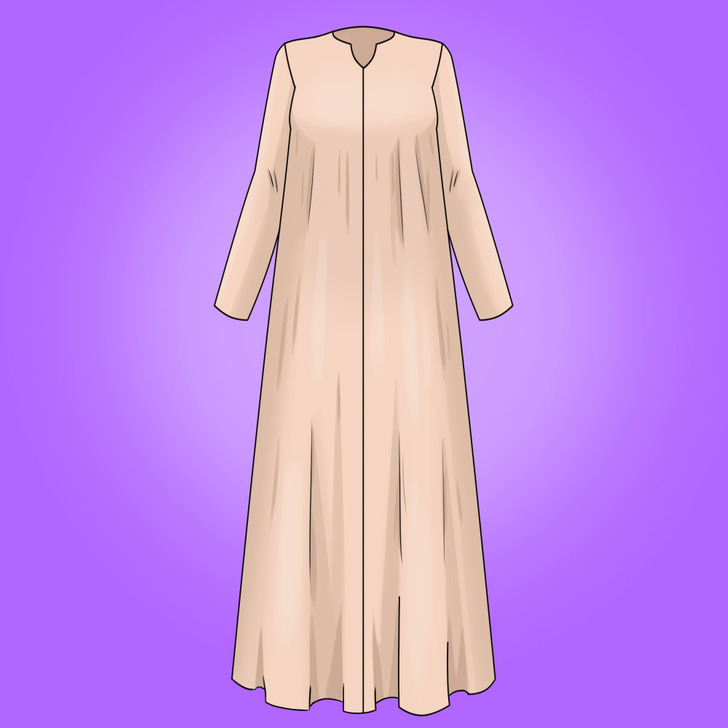
In the Middle Ages, women wore chemises under their outerwear. They looked like long-sleeved dresses that reached their feet. It was the only regularly washed piece of clothing, it protected other pieces of clothing from sweat, and wear and tear. Chemises protected the skin from irritation from woolen outer clothes. Its aim was also to create an extra layer and preserve the warmth.
Nobody knows exactly what women wore on their lower bodies as an undergarment during the Middle Ages. No reliable historical proof has been preserved. Researchers can only assume women wore underpants, like shorts that were similar to what men wore.
16th-18th centuries: petticoats and corsets
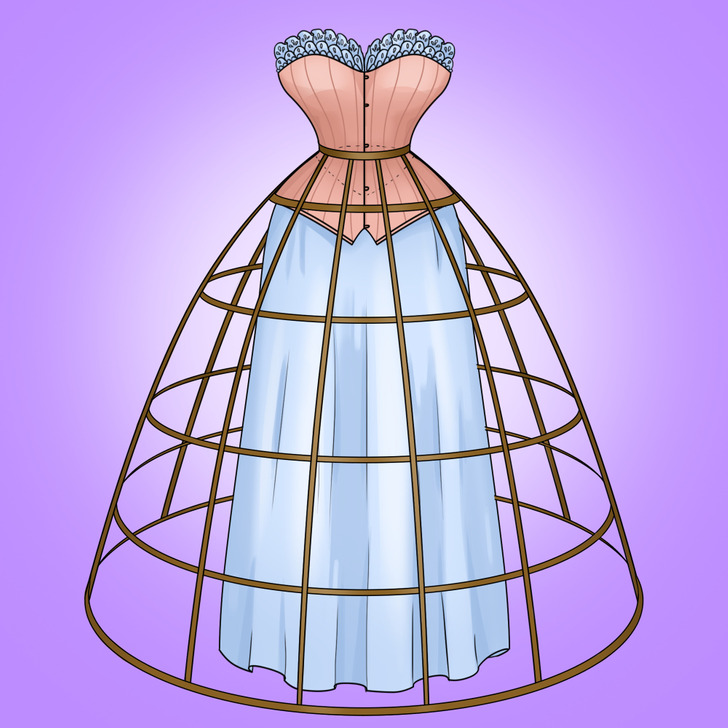
During the Renaissance, women wore petticoats on top of their chemises. In the 16th century, farthingales came into fashion. These petticoats were designed as a cone extending from the waist and were made of fabric stretched on a reed or willow-rod frame. Farthingales were used to extend the lower part of the female body and played important cultural and social roles in Renaissance society. Women used them to show the level of income and the social position of their families.
Corsets appeared around this time. Their popularity began to grow. At the beginning they were loose and later they became extremely uncomfortable and painfully tightened around women’s waists. This prevented free breathing, caused poor digestion, and could cause rib cage deformation. Women endured discomfort in the name of corset fashion until the early 20th century.
19th century: pantalettes and union suits
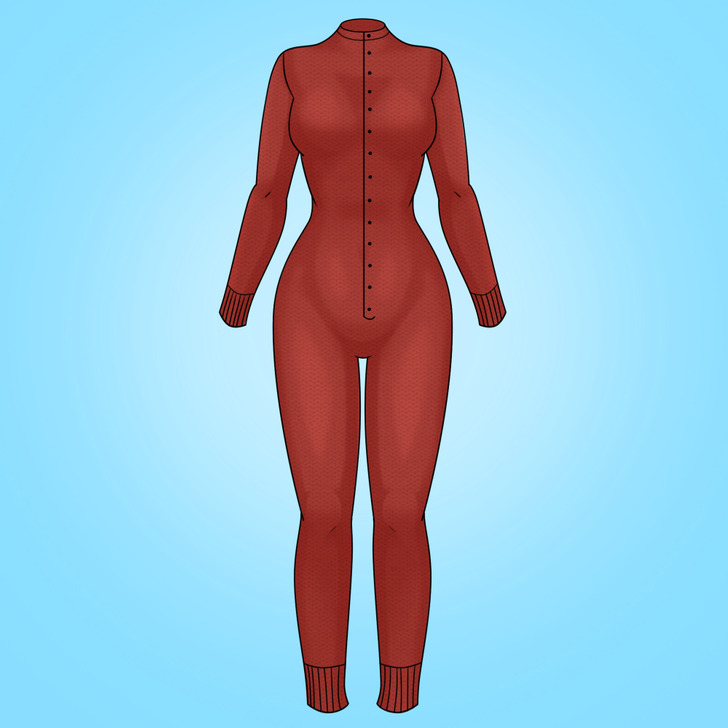
Fuller skirts came into fashion and women had to wear many petticoats to get the desired shape. In the middle of the century, stiffened crinolines and hoop skirts appeared. Women began to wear long drawers under the crinolines to keep warm and for modesty. These drawers were called “pantalettes” or “pantaloons.” They could be one piece or 2 pieces of clothing, one for each leg. The crotch was opened to make it easier for women to go to the toilet. They were attached at the waist by laces or buttons.
At the end of the century, the union suit appeared as a unisex piece of underwear. It was a one-piece garment usually made of knit fabric with buttons in front of it and a flap on the back. The flap was designed for hygienic purposes.
The beginning of the 20th century: the first modern bra
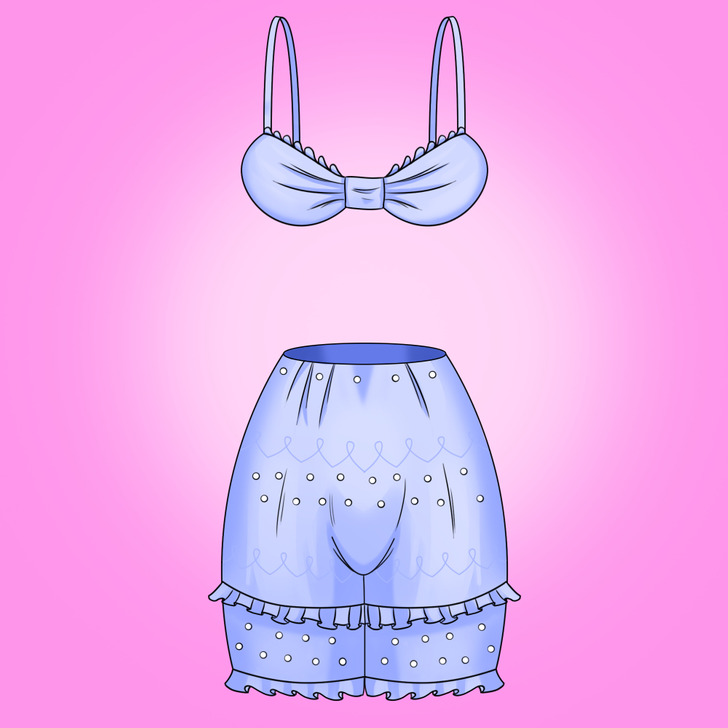
This time marks the most dramatic and swift changes in the world of women’s underwear. It all happened when Caresse Crosby, a 19-year-old future publisher and writer, was preparing for a ball. She decided to avoid wearing the tight and painful corset. So she took 2 handkerchiefs and sewed them together with a pink ribbon. That was the day when the first modern bra was created. Other women, who were also tired of uncomfortable corsets, soon began to copy this accidental invention with great pleasure and relief.
At the end of the 1910s, the idea to split the union suit into 2 parts came about. That is how modern drawers and undershirts were invented. They were modified into lacier versions of this set called “camisole” and “tap pants.”
The 1940s: the return of corsets
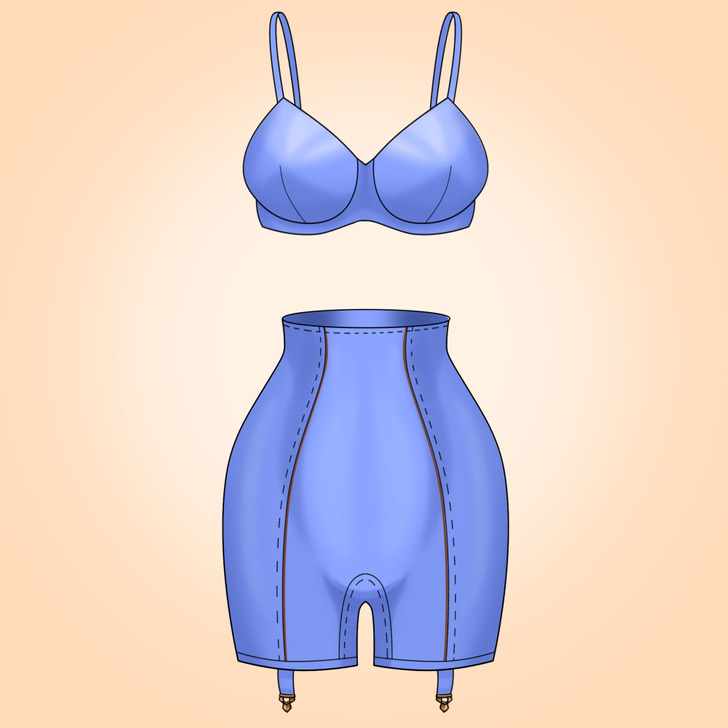
During this period the simplified corset without the whalebone or metal carcass returned into fashion. This type of undergarment, called “a girdle,” encircled the lower torso and extended below the hips. It was used for support or to shape. Women also wore girdles in medical treatment and sports as compressive underwear. It usually came with a brassiere and garters designed to attach stockings.
The 1960s: the bullet bras
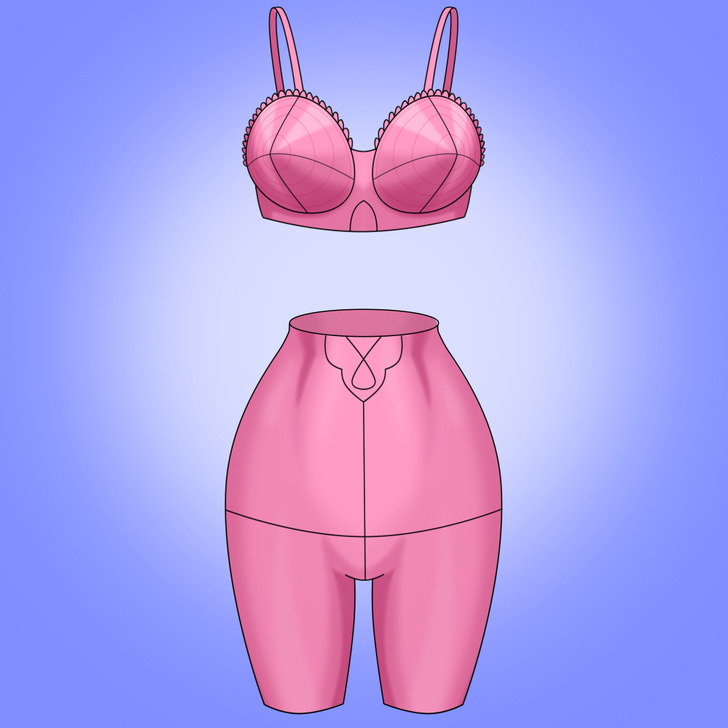
In the 1960s, female underwear was focused on emphasizing breasts instead of the waist, as it had been earlier. Designers promoted these garments as an independent fashion unit and made them in a variety of colors and prints. This decade is marked by the appearance of the legendary bullet bra with pointed cups. Women’s panties became smaller and more colorful. They were available mostly in 2 styles called “the hip-hugger” and “the bikini.”
Pantyhose or tights combining panties and hose into one piece of underwear also appeared on the market. Later a seamless version was introduced. It became quite popular because it went perfectly with miniskirts.
The 1990s: the epoch of the push-up
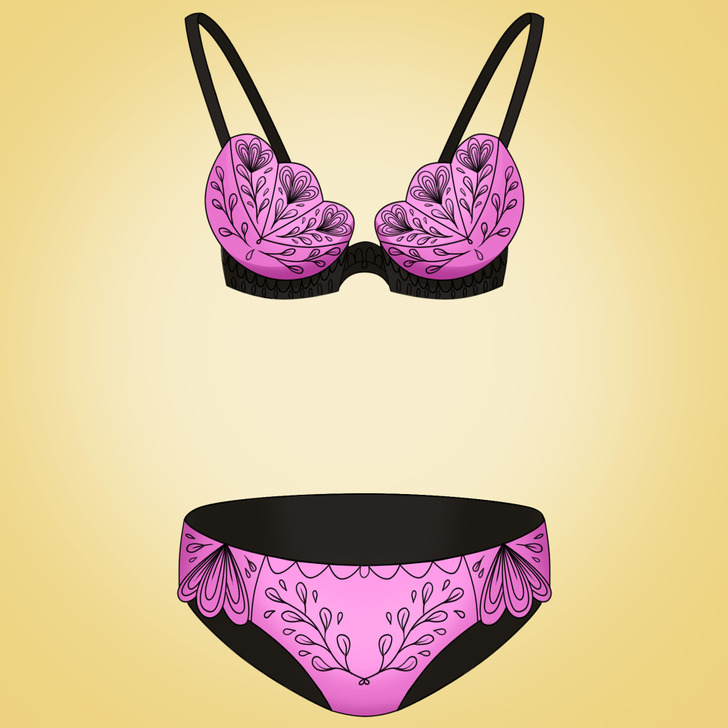
In the ’90s of the 20th century, the famous push-up bras gained popularity. This type of lingerie made a real revolution. The advertising company and marketing tools used to promote these bras are considered among the most effective in history. At this time, thongs and G-strings also became popular.
The present day: natural effect
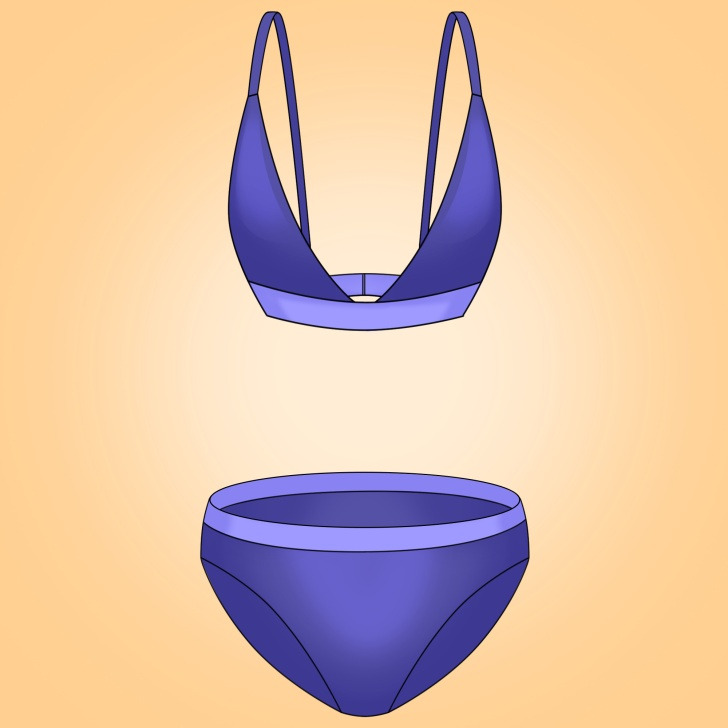
There are no specific types of underwear that are popular, and variety is in fashion now. There are plenty of basic styles and shapes, and everyone can choose whatever they want for any purpose: support, shaping, disguising certain zones, etc. Underwired and padded push-up bras lost their popularity in favor of soft types of bras and bralettes. Underwear is also being actively shown on the streets as a part of outerwear.
Have you noticed that lingerie can influence your mood? Which pieces of underwear make you feel good?